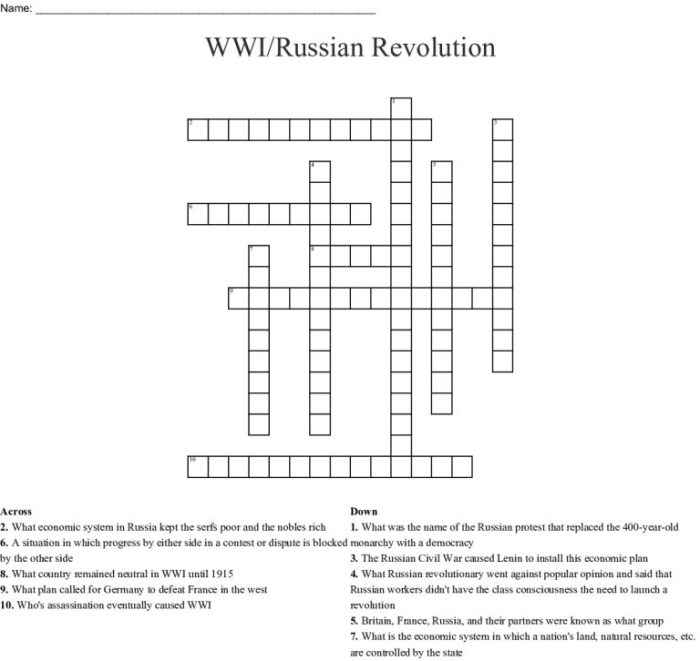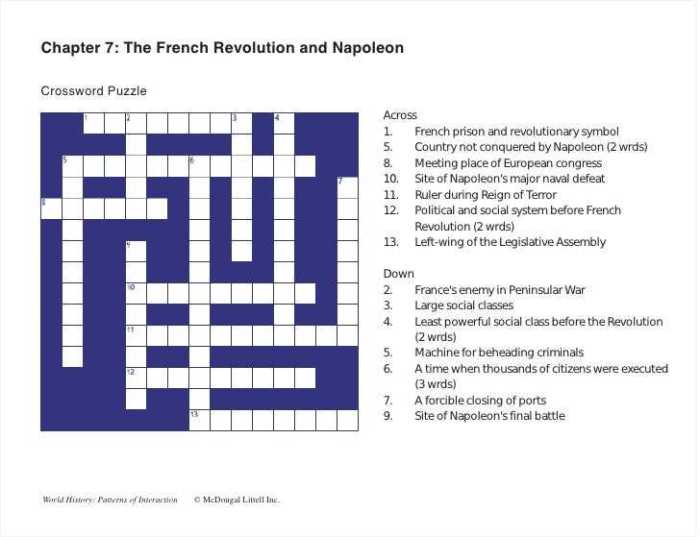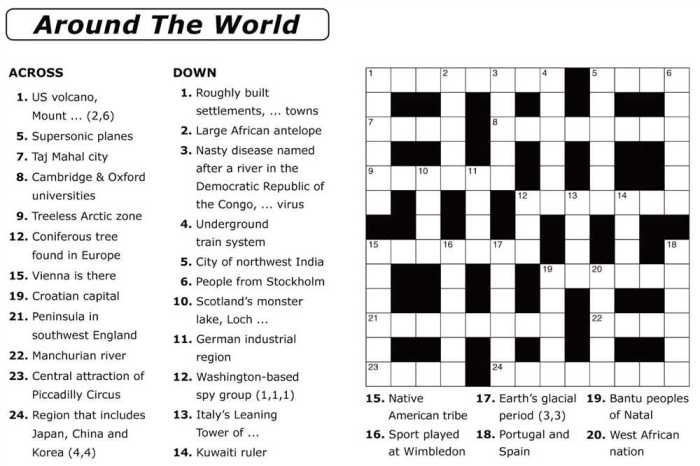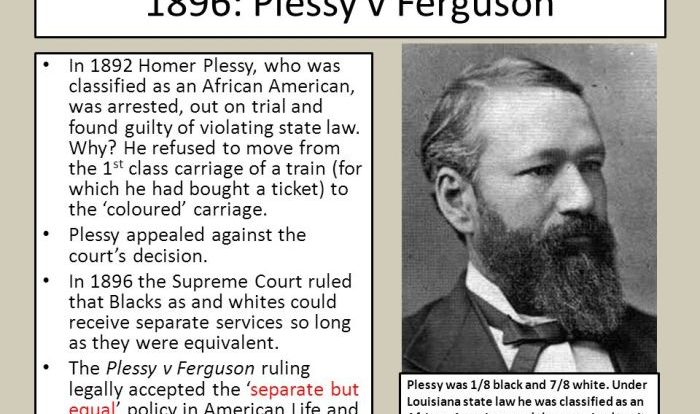Welcome to the definitive guide to Russian Revolution crossword puzzle answers! Dive into a journey through the pivotal events, key figures, and underlying causes that shaped one of history’s most transformative revolutions. This comprehensive resource provides an immersive experience for history enthusiasts, puzzle solvers, and anyone seeking a deeper understanding of this fascinating period.
Our team of experts has meticulously compiled an extensive list of crossword puzzle answers related to the Russian Revolution, ensuring accuracy and comprehensiveness. From prominent leaders to pivotal events, each answer is carefully crafted to enhance your puzzle-solving skills and deepen your knowledge of this historical milestone.
Russian Revolution Figures
The Russian Revolution involved a wide range of individuals who played significant roles in its course and outcome. Key figures include:
- Vladimir Lenin: Leader of the Bolshevik Party, the driving force behind the revolution.
- Leon Trotsky: Military leader of the Red Army, instrumental in suppressing counter-revolutionary forces.
- Joseph Stalin: Bolshevik leader who rose to power after Lenin’s death, establishing a totalitarian regime.
- Alexander Kerensky: Head of the Provisional Government established after the overthrow of the Tsar.
- Nicholas II: The last Tsar of Russia, whose abdication paved the way for the revolution.
Events Leading to the Revolution

A series of events and factors contributed to the outbreak of the Russian Revolution:
- Economic inequality: The vast majority of the population lived in poverty, while a small elite enjoyed immense wealth.
- Political oppression: The Tsarist regime was autocratic, with limited political freedoms and widespread censorship.
- Social unrest: Peasants, workers, and intellectuals alike grew increasingly dissatisfied with their living conditions.
- Military defeat: Russia’s humiliating defeat in the Russo-Japanese War of 1905 exposed the weaknesses of the Tsarist regime.
- World War I: The war placed enormous strain on Russia’s economy and military, further exacerbating social tensions.
Causes of the Revolution

- Economic causes: Extreme economic inequality, widespread poverty, and industrial exploitation.
- Social causes: Oppressive social hierarchy, limited opportunities for social mobility, and discrimination against minorities.
- Political causes: Autocratic rule, lack of political freedoms, and censorship.
- Intellectual influences: Ideas of socialism, Marxism, and anarchism gained widespread popularity among intellectuals and the working class.
- Military weakness: Russia’s military failures, particularly in the Russo-Japanese War and World War I, exposed the regime’s incompetence and vulnerability.
Impact of the Revolution
| Short-Term Impact | Long-Term Impact |
|---|---|
| Overthrow of the Tsarist regime | Establishment of the Soviet Union |
| Civil war and widespread violence | Rise of communism and the Cold War |
| Economic collapse and famine | Political and social transformation of Russia |
| Emergence of the Red Army | Global influence on the development of socialism and communism |
Key Terms and Concepts

- Bolsheviks: A radical faction of the Russian Social Democratic Labour Party, led by Vladimir Lenin.
- Communism: A political and economic ideology that advocates for a classless, stateless society based on common ownership of the means of production.
- Marxism: A social and economic theory developed by Karl Marx, which analyzes class struggle and the capitalist mode of production.
- Proletariat: The working class, according to Marxist theory.
- Soviet: A council of workers and soldiers that played a key role in the Russian Revolution.
- Tsar: The title of the Russian emperor.
Timeline of Events: Russian Revolution Crossword Puzzle Answers
| Date | Event | Significance |
|---|---|---|
| 1905 | Bloody Sunday | A peaceful demonstration of workers in St. Petersburg was brutally suppressed, sparking widespread unrest. |
| 1917 | February Revolution | Mass protests and strikes in Petrograd (St. Petersburg) led to the abdication of Tsar Nicholas II. |
| 1917 | October Revolution | The Bolsheviks seized power in Petrograd, establishing the Soviet Union. |
| 1918-1921 | Russian Civil War | A bloody conflict between the Bolsheviks and various anti-communist forces. |
| 1922 | Formation of the Soviet Union | The Russian Soviet Federative Socialist Republic and other Soviet republics united to form the Union of Soviet Socialist Republics (USSR). |
Answers to Common Questions
What is the significance of the Russian Revolution?
The Russian Revolution was a pivotal event in world history, leading to the overthrow of the Tsarist regime and the establishment of the Soviet Union. It had a profound impact on global politics, economics, and social structures.
Who was the leader of the Bolsheviks?
Vladimir Lenin was the leader of the Bolshevik Party, which played a central role in the Russian Revolution. His revolutionary ideas and leadership were instrumental in the overthrow of the Tsarist government.
What were the main causes of the Russian Revolution?
The Russian Revolution was caused by a complex combination of economic, social, and political factors, including widespread poverty, inequality, and political oppression. These factors created a fertile ground for revolutionary sentiment.
